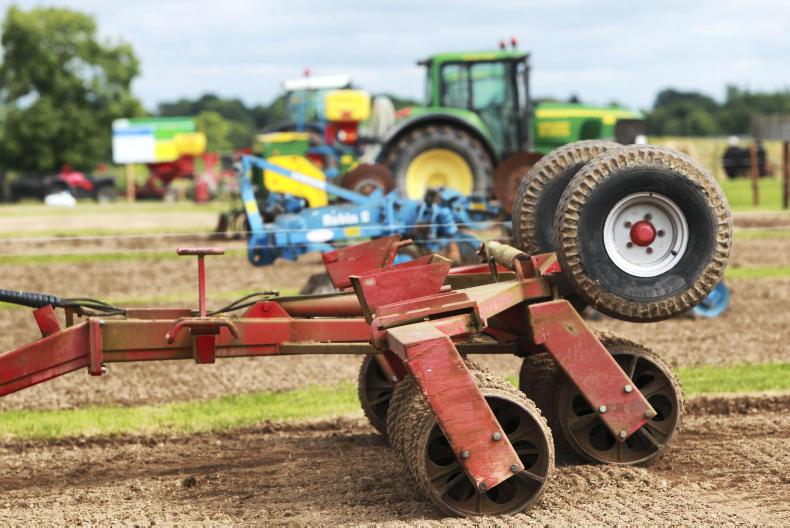1 The first and arguably the most important task when reseeding is to burn off the old vegetation. This kills the weed grass species and any other weeds that are in the sward. There is no point reseeding if the old vegetation comes back.
2 Give it time before cultivating. This is especially important if using min-till techniques as the old sward needs to be well died back for enough tilth and soil to come up and make contact with the seeds. By right, the burned off sward should be well grazed or mowed for silage and then left for two weeks before cultivating to allow for the spray to transgress the roots of docks.
3 If using min-till, get lime on as soon as possible after grazing/mowing. Lime is essential when using min-till techniques as the decaying thrash can cause surface layers to become acidic which can affect seed germination rates. Lime neutralises this acidity.
If ploughing, spread the lime after ploughing and before cultivating.
4 Use the right machine for the job. There are a myriad of machines available on the market for reseeding. Grass seed wants a fine, firm and level seedbed.
The most important requirement is that the seed makes firm contact with soil. Some min-till machines don’t work well in very hard ground as the tines fail to bring up enough tilth.
However, experience tends to be that all sowing methods work, but some methods take longer for germination and establishment than others. This can pose a challenge with weed and pest control and it also delays the turn-around time.
Best policy is to assess the conditions and choose a sowing method that suits the conditions.
5 Don’t skimp on seeding rate, especially if conditions are challenged such as risk of drought or cold. Most seed bags come in 12kg packs and are marketed as acre/packs. In my view, 12kg/acre is a light enough seeding rate and I would be more comfortable at 14kg/acre, even in good conditions. If sowing tetraploid varieties, the seed sizes are bigger so there are less seeds per kilo. This means to get the same seeding rate, a higher seed rate (kg/acre) may need to be sown.
6 Regardless of the sowing method, rolling post sowing will help to improve the soil to seed contact and aid fast germination. We often see that the first seeds to emerge are the ones are the ones sown under wheel tracks as the soil is firmer.
There is no difference between a flat and a ring roller, but a ring roller might be better if heavy rain is expected after sowing.
7 Make sure there is enough nitrogen, phosphorus and potassium available for the seedlings. The general rule of thumb is to spread three bags per acre 10:10:20 and then top up with a bag of CAN/acre after germination.
8 One of the most important tasks which has a huge impact on the long term success of the reseed is to use a post emergence spray. This should be carried out before grazing for the first time when the weed seedlings have emerged and are easily killed. Only use clover safe sprays where clover is sown.
9 Graze the new reseeds early, tight and often to maximise tillering. Some people use calves for grazing reseeds, but if the land is firm enough bigger cattle will be more effective.






 This is a subscriber-only article
This is a subscriber-only article









SHARING OPTIONS: